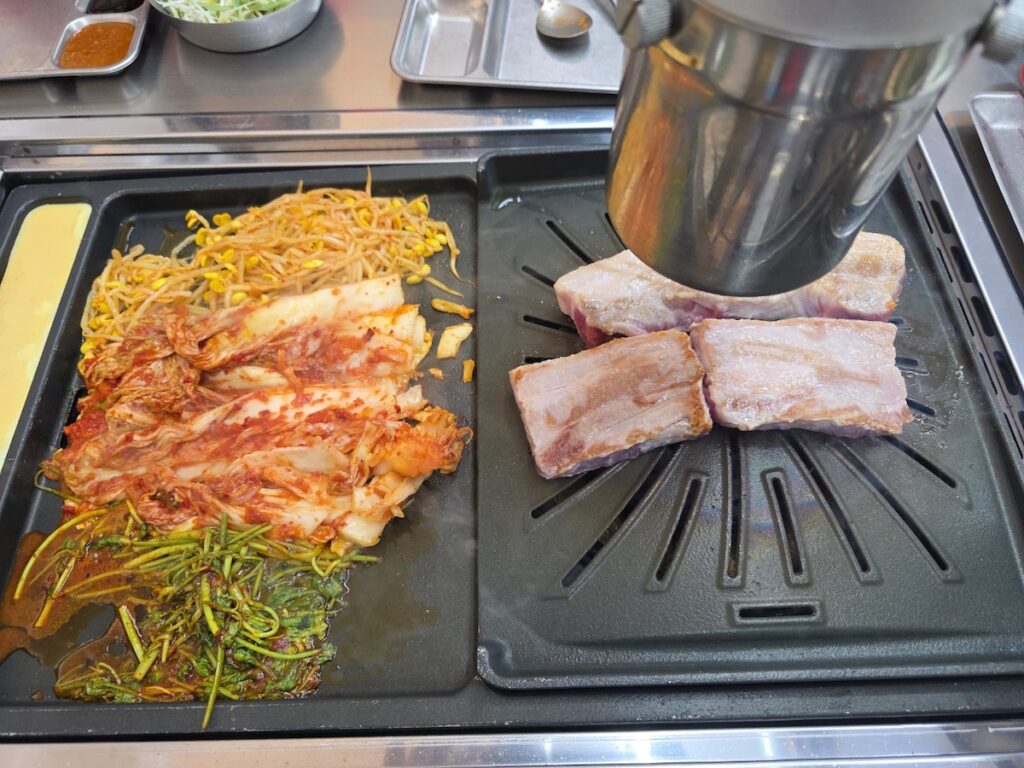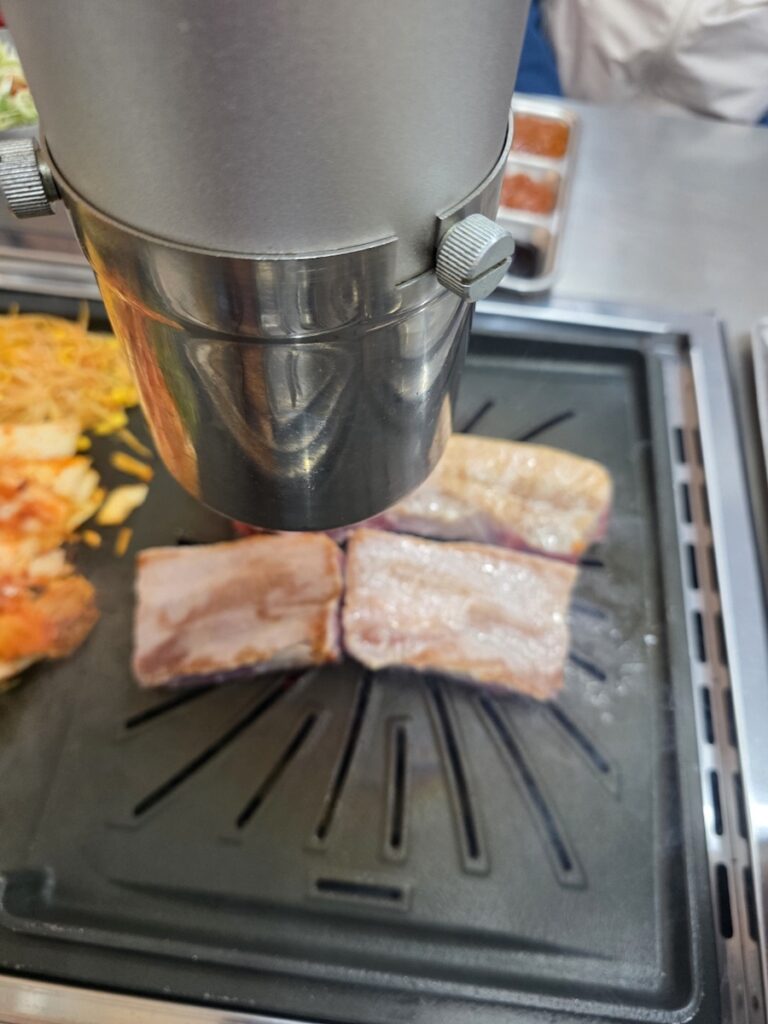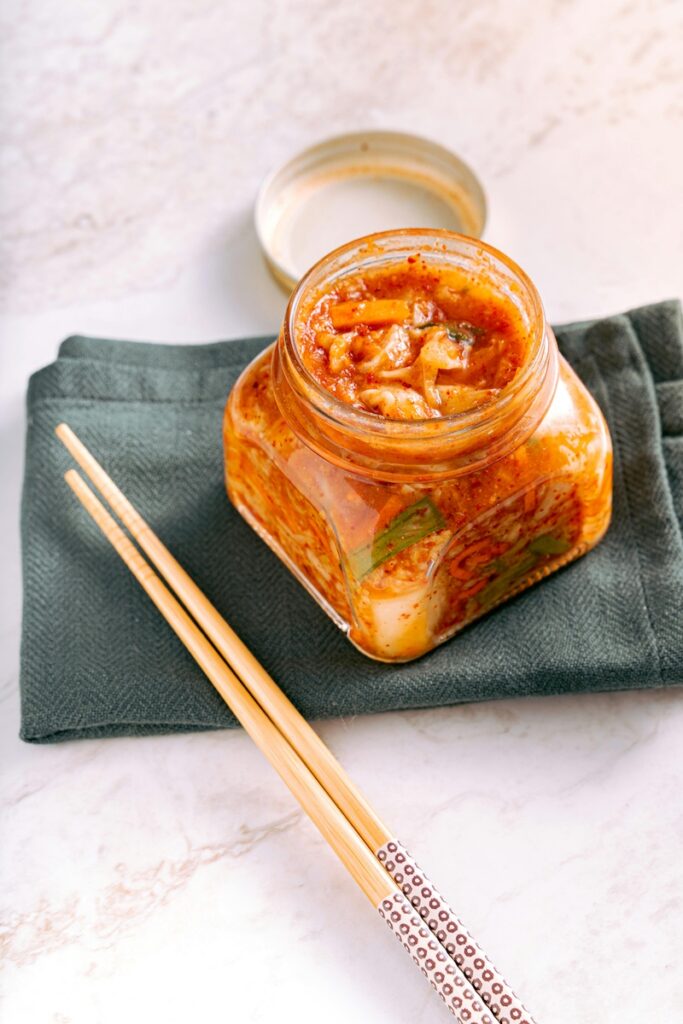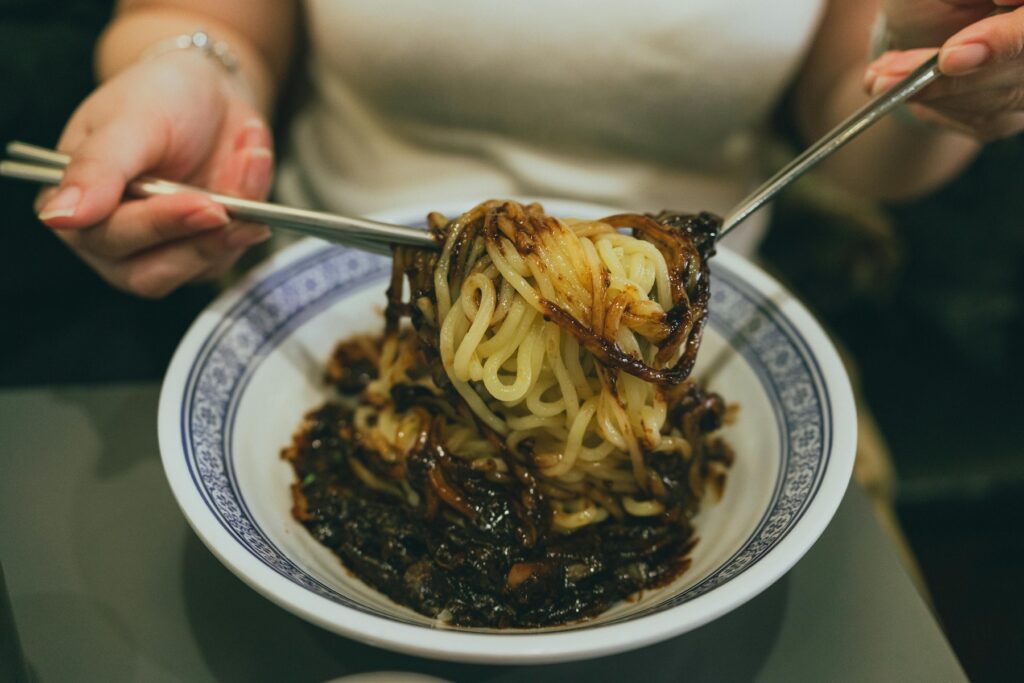f you’ve ever sat down for Korean BBQ and wondered why you don’t smell like grilled meat afterward, you’ve witnessed one of Korea’s smartest inventions — the smoke-suction ventilation system. Those silver pipes dangling over the grill aren’t just decor; they’re a masterpiece of dining engineering that keeps restaurants clear, clean, and comfortable.
For foreigners, this single detail often becomes a “wait, how does that work?” moment. Let’s dive into how this ingenious setup defines modern Korean dining — a perfect blend of technology, culture, and courtesy.

1. The Problem Every BBQ Nation Faces
In most countries, barbecue equals smoke: sticky air, greasy clothes, and burning eyes.
Restaurants either open all windows or accept that everyone will walk out smelling like a campfire.
Korea decided decades ago that this wasn’t good enough. As the BBQ culture exploded in the 1980s and 1990s, Korean engineers began designing table-specific exhaust systems that pull the smoke right off the grill before it spreads. It was a revolution that quietly changed restaurant culture forever.
2. How the Korean BBQ Ventilation System Works
Each table has a flexible metal duct, usually stainless steel or copper, that hovers above the grill. When you start cooking, you’ll hear a soft hum — that’s the fan in the ceiling sucking the air downward through the pipe.
Two main systems exist:
• Top-Down Suction
The pipe extends from the ceiling and hovers directly over the meat. As soon as smoke rises, it’s drawn up the tube into a high-power fan and filtered before being expelled outside.
This is the most common setup in urban BBQ chains like Mapo Galmaegi or Seorae.
• Under-Table Suction
In modern or minimalist restaurants, instead of overhead ducts, there’s a vacuum hidden under the grill.
Smoke is pulled downward through vents in the table itself — quieter and sleeker, often used in luxury venues in Seoul or Gangnam.
Either way, the airflow is strong enough that you can literally see the smoke vanish mid-air.
3. Why Koreans Take It So Seriously
For Koreans, dining comfort is almost a social courtesy. No one wants to head back to the office or meet friends reeking of meat. The ventilation system isn’t just convenience — it’s consideration.
Cultural values behind the tech:
- Cleanliness = respect. Smelling neutral after eating is seen as polite.
- Efficiency = quality. A restaurant that invests in good air control signals professionalism.
- Social focus. When there’s no smoke cloud, you can actually see and talk to your friends.
In a way, these silver ducts are a physical reflection of Korean social harmony — everyone enjoys the same shared meal without discomfort.
4. From Hardware to Heritage: Evolution of BBQ Design
Early systems were bulky and loud. Modern Korean BBQ restaurants now install variable-speed fans, activated-carbon filters, and smart sensors that adjust suction depending on grill heat.
Some premium spots even have:
- Noise-reduced ducts that hum like background white noise.
- Odor-neutralizing filters that trap oil particles.
- Automatic retracting hoses that glide up when not in use.
Korean BBQ technology has become so advanced that HVAC engineers from Japan, Taiwan, and Singapore have studied it to improve their own restaurant systems.
5. Environmental Angle: From Smoke to Sustainability
These systems don’t just protect your nose — they protect the air.
By filtering greasy smoke and particulates, they drastically reduce indoor pollution. Many chains now install eco-friendly exhaust filters that capture fine oil mist before it escapes outdoors, helping Korea maintain cleaner urban air in dense dining zones like Hongdae and Gangnam.

6. What It’s Like as a Foreigner
When Singaporean or Western visitors dine in Seoul, their reaction is almost identical:
“Wait, where’s all the smoke?”
“How is my jacket not smelly?”
“Can we bring this system to Singapore?”
It’s one of those everyday technologies that travelers instantly notice but rarely read about. It defines how smart design shapes everyday Korean life — quietly, efficiently, and aesthetically.
7. Comparing Asia’s BBQ Cultures
| Country | Typical BBQ Style | Smoke Management |
|---|---|---|
| Singapore / Malaysia | Open-air or outdoor BBQ; fans or natural ventilation | Minimal control; smoke lingers |
| Japan | Yakiniku indoors; small tabletop fans or vents | Partial suction, but weaker |
| Korea | Indoor BBQ; integrated suction ducts per table | Strong localized extraction, nearly smokeless |
This system allows Korean BBQ restaurants to operate even in basements or high-rise buildings without violating fire or air codes — an architectural feat few countries match.
8. The Science Behind the Sizzle
Every grill produces a mix of water vapor, oil mist, and particulate matter (PM2.5).
Korea’s localized suction captures these within 10–20 cm of emission — before diffusion occurs.
That’s why the smell doesn’t cling to your hair or jacket.
Average suction velocity at the nozzle?
👉 8–10 m/s, enough to lift and direct smoke vertically or downward without disturbing the flame.
9. The Human Touch: Why It Feels So “Korean”
It’s not just technology — it’s about comfort meeting courtesy. Koreans perfected the art of social dining:
- Tables stay clean.
- Conversations remain clear.
- Clothes stay fresh.
The same mindset that powers Korea’s spotless subways and umbrella dryers also drives its BBQ tech — innovation born from empathy.
10. What’s Next: Smart BBQ Tech
Seoul’s newest restaurants are experimenting with:
- IoT air sensors that adjust fan power automatically.
- AI exhaust controls predicting peak smoke moments.
- Transparent ducts with LED edges, turning engineering into ambience.
Even home BBQ devices now use mini suction domes inspired by restaurant systems — proof that the idea has gone mainstream.
11. Tips for Visitors (and Food Bloggers)
- Pick your seat wisely. If the pipe’s too high, ask staff to pull it closer.
- Don’t touch the pipe tip — it gets warm.
- Appreciate the quiet hum — that’s the sound of clean air.
- Post the visual! On camera, the silver ducts and disappearing smoke look cinematic — perfect for travel blogs or Reels.
- For rainy nights: notice how Korea also keeps umbrellas dry and BBQ air clear — the same obsession with comfort runs through daily life.
12. Why This Story Deserves the Spotlight
This isn’t just about meat or machines. It’s about how Korea designs experiences.
From automatic umbrella dryers to smokeless BBQ vents, Koreans constantly solve problems that most people simply tolerate.
When you write or film about Korea, highlight this — it’s the small, smart details that make audiences fall in love with the country.
13. Final Thoughts
Next time you sit under one of those shining metal tubes, listen to the low hum above your grill. That’s not just ventilation — it’s a quiet statement of Korean innovation.
A country that figured out how to eat smoky BBQ without the smoke deserves applause.
So, when your Ameraican friends ask,
“Why doesn’t Korean BBQ smell like BBQ?”
just smile and say,
“Because Korea thought of everything.”

